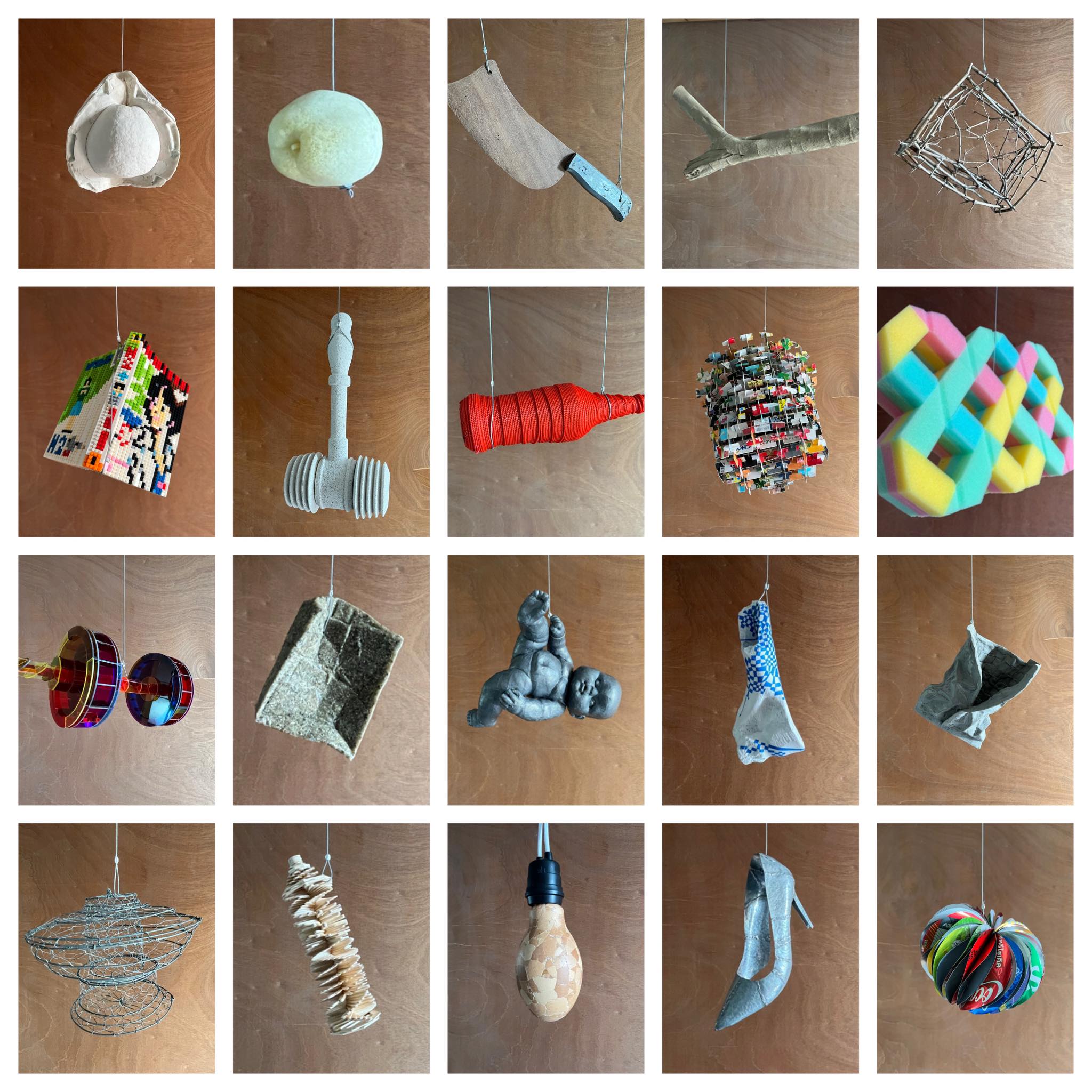
Faculty of Digital Art, Rangsit University
Thitipong Nueangpim
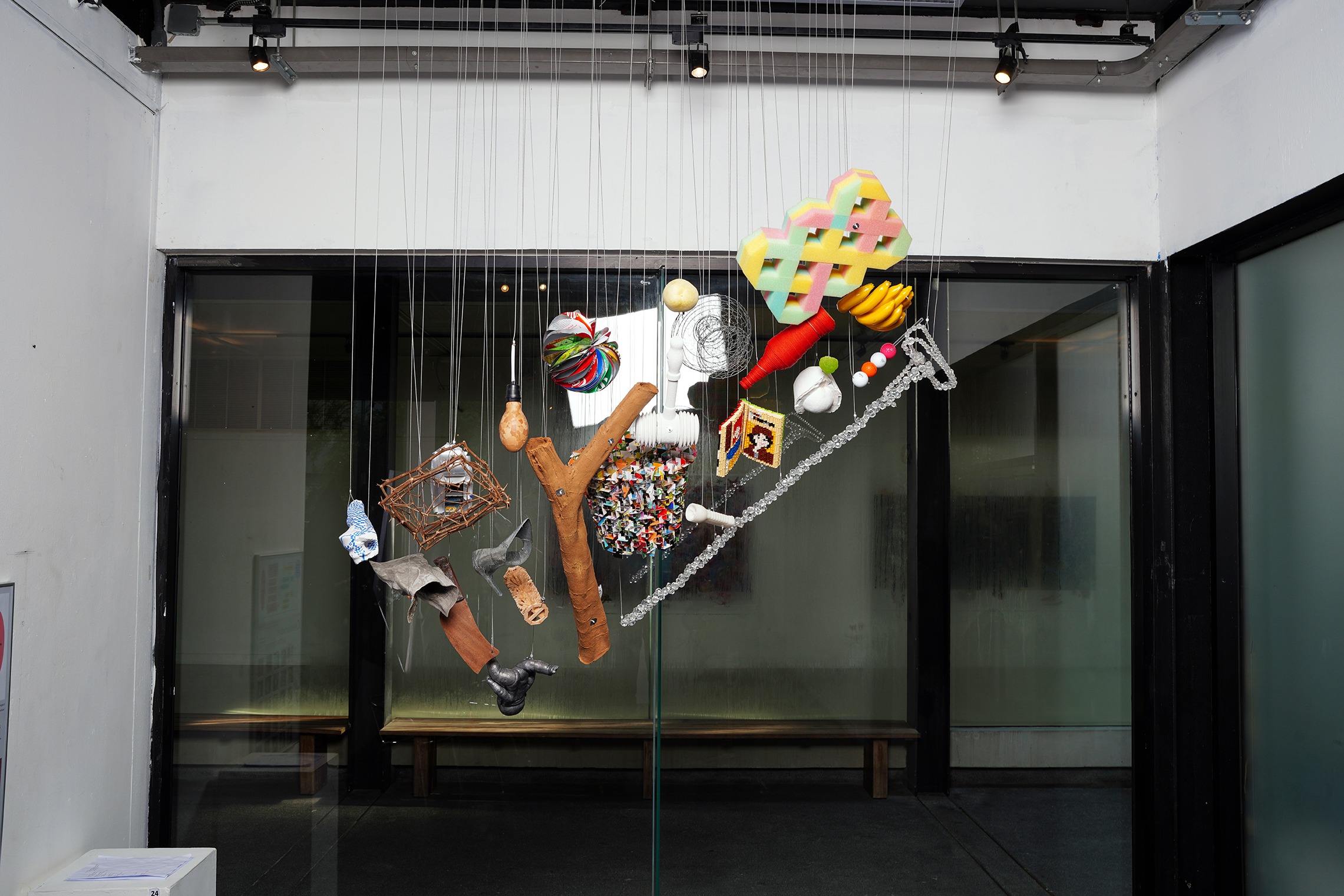
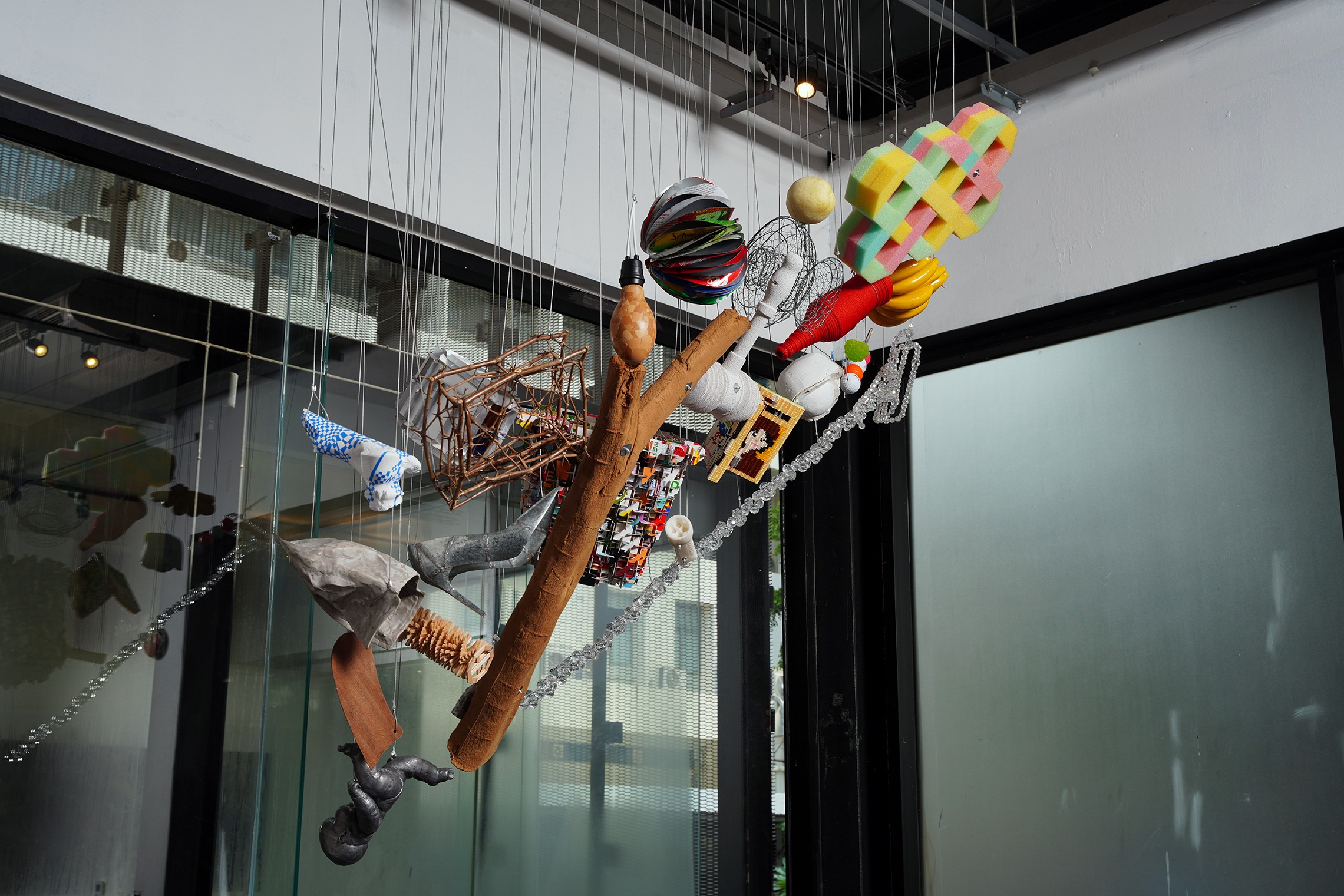
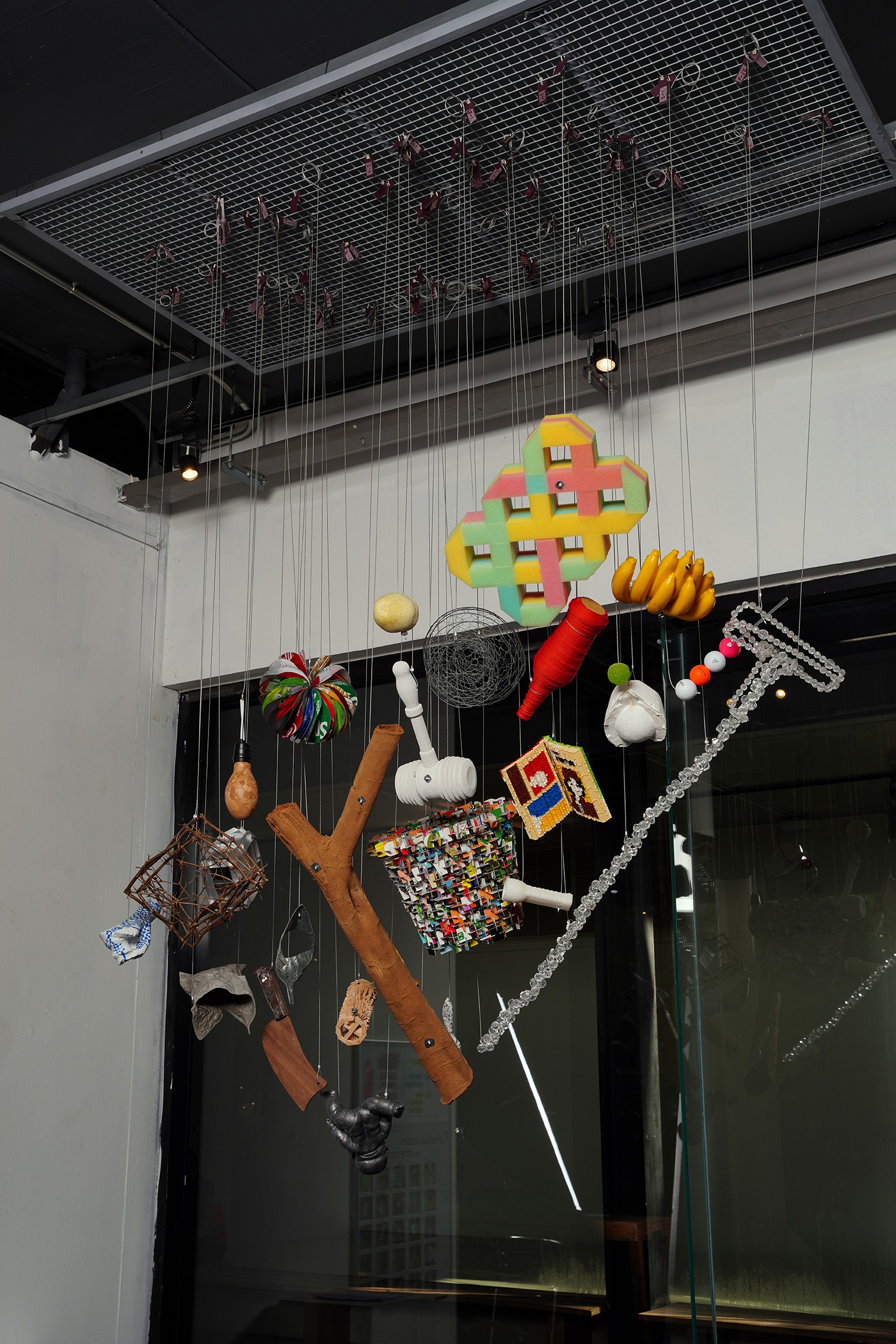
Abstract :
‘Celestial Bodies and the Cosmos’ is a mixed-media sculpture from the research project ‘Contemplating Sculpture as an Object of Perception: Study and Creation.’ It questions sculpture as something that appears in perception, emphasizing the interaction between the sculpture and the viewer, exploring what significance sculpture offers. The conceptual framework is defined through an exploration of three related concepts and theories, as follows:
- Overview of Perception Theory: From classical philosophy to scientific aesthetics, perception remains fundamental to understanding the world. In the context of scientific aesthetics, there is an ongoing effort to explain aesthetic experiences and judgments through scientific frameworks and methods. This study applies scientific reasoning to more concretely explain the connection between the material world (such as sculpture) and the mental world. Additionally, the research highlights the role of mindful perception in art as a contributor to intellectual development.
- The Value of Aesthetic Experience: In 21st-century art, the integration of technology has significantly enhanced its potential to guide viewers towards complex, multidimensional experiences. The design of perception plays a crucial role in stimulating viewer engagement. This research highlights the importance of perception design in sculpture, focusing on the significance of familiar forms, evolving materials and techniques, and unconventional installations. These elements challenge conventional understanding, prompting deeper reflection and fostering active participation from the audience.
- The Nature of Sculpture: The researcher analyzes works by both domestic and international artists, starting with their visible physical attributes, including artistic form, location, and installation. This is followed by an examination of the intangible yet perceptible aspects, such as underlying concepts, symbols, and meanings. Together, these elements shape the viewer’s perception, ultimately culminating in a unique aesthetic experience for each individual.
Sculpture provides a distinct spatial perception, closely aligned with human existence in the world, where our senses engage with objects while being enveloped by the surrounding environment. Furthermore, sculpture offers insight into the organization of matter, as it shares similarities with the human body, living organisms, the Earth, and the universe, all of which are structured through different arrangements of matter beyond mere sensory perception.
Objectives :
1. Define the conceptual framework derived from the exploration of related concepts and theories, including an overview of the theory of perception, the value of aesthetic experience, and the nature of sculpture.
2. Define the form of the sculpture, focusing on the use of materials, the assembly of shapes, and the installation that stimulates the aesthetic experience in the viewers.
3. The mixed-media sculpture communicates the theme of the connection between humans, sculpture, and the perception of the world or the cosmos.
Conceptual Framework :
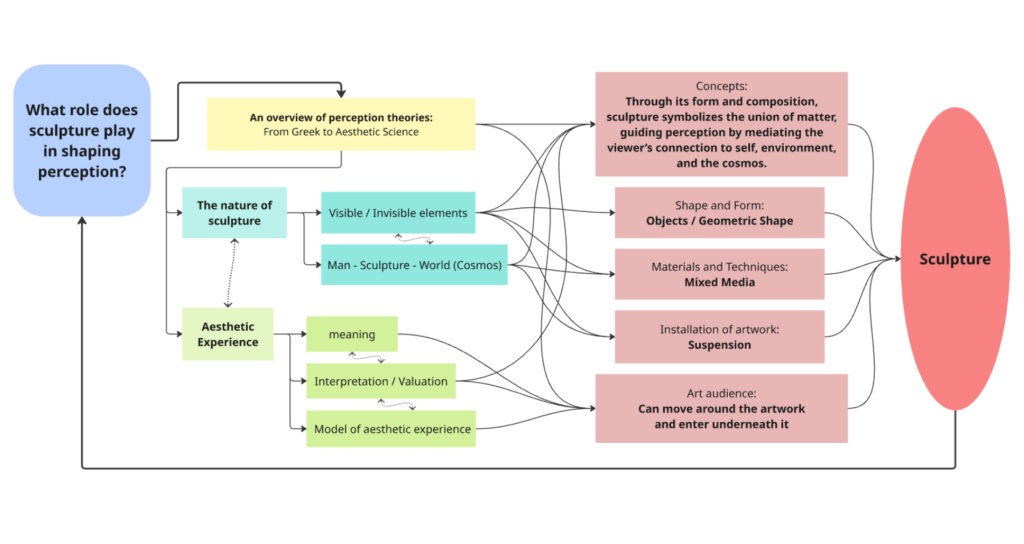
Theoretical Framework and Conceptual Framework of the research project ‘Contemplating Sculpture as an Object of Perception: Study and Creation.’
Process / Methodology :
1. Study of Relevant Concepts and Theories
1.1 Study the theory of perception, tracing its development from classical philosophy to scientific aesthetics, in order to understand the importance of perception. This includes exploring the historical and contemporary approaches to perception, which can serve as a foundation for understanding the concepts of aesthetic experience and the nature of sculpture.
1.2 Study the concept of aesthetic experience in terms of value and meaning-making, particularly in the interaction between the viewer and the artwork.
1.3 Study the nature of sculpture:
• The significance of sculpture for humans.
• The visible physical components and the perceptible elements that contribute to the understanding of the three-dimensional nature of sculpture and its influence on perception.
1.4 Analyze all the data collectively to develop a conceptual framework for creation.
2. Define the Conceptual Framework for Creation
2.1 Define the steps and plan for the creative process.
2.2 Create a draft of the artwork, specifying the clarity of shapes, material selection, techniques, and installation.
3. Creation and Exhibition of the Artwork
3.1 Begin the creation of the component pieces according to the defined plan.
3.2 Assemble the component pieces into the final artwork and test the installation to assess the completeness of the work in its final form.
3.3 Exhibit the artwork.
4. Conclusion Prepare an analysis and provide recommendations.
Techniques and Materials :
- 25 pieces of mixed media sculpture components.
- Suspended together, with the lowest point 145 cm above the ground.
Result / Conclusion :
- Acquired a comprehensive understanding of the concepts of perception, aesthetic experience, and the nature of sculpture.
- Created a mixed-media sculpture that exemplifies the concept of the interconnectedness between humans, sculpture, and the perception of the world (or the cosmos).
- Developed an understanding of the significance of sculpture in relation to human experience.
References :
Carroll, Noël & Gilmore, Jonathan (eds.) (2022). The Routledge Companion to the Philosophies of Painting and Sculpture. Routledge.
Dreishpoon, D. (2022). Modern sculpture: artists in their own words. University of California Press.
Martin, F. David (1980). Sculpture and Enlivened Space Aesthetics and History. University Press of Kentucky.
Matthen, Mohan (ed.) (2015). The Oxford Handbook of the Philosophy of Perception. New York, NY: Oxford University Press UK.
Nadal, Marcos & Vartanian, Oshin (eds.) (2022). The Oxford handbook of empirical aesthetics. New York, NY: Oxford University Press.
Read, H. (1969). The art of sculpture ([2d ed.). Princeton University Press. Shimamura, A. P., & Palmer, S. E. (Eds.). (2012). Aesthetic science: Connecting minds, brains, and experience. Oxford University Press.
Tatarkiewicz, Władysław (1970). History of aesthetics. The Hague,: Mouton. Edited by Cyril Barrett & D. Petsch.